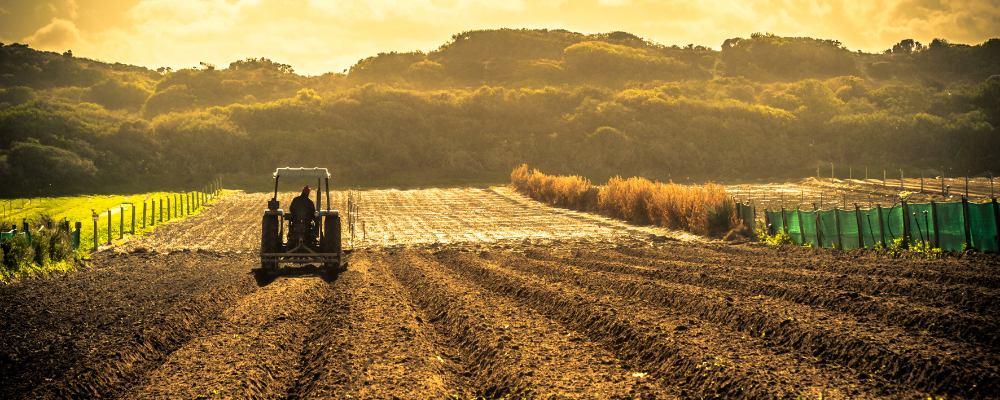Drop off your CV
We'd love to hear from you. Send us your CV and one of our specialist consultants will be in touch.

The consumption of insects has been happening for hundreds of years, with a lot of countries considering insects to be a delicacy and a key source of protein. However, more recently insects have become a topic of discussion as a natural feed alternative. Insects are a natural animal feed option that is high in protein, has a strong amino acid profile and promotes nutrient uptake.
The agricultural industry is under tremendous strain to try and keep up with the ever-increasing demand for food. As the human population continues to increase so too does the demand for food and, therefore, animal feed. In 2016 alone livestock was fed more than 1 billion metric tonnes of feed. FAO estimates that food production will need to increase by 70% by 2050. Could using insects as a feed source be a viable solution and help supply this ever-growing food demand from the population?
There are a wide number of benefits for using insects as a feed source.
Reduced environmental impact from traditional farming – Using insects as animal feed is significantly more efficient and sustainable than traditional livestock farming feed as you can create the same level of output in considerably less space. The diagram below demonstrates this by comparing insects’ usage of natural resources to other livestock animals’ usage. Insects need a very small amount of feed to grow and by then using them as an animal feed source this reduces the need for fields to grow traditional animal feed. This helps to reduce the overall negative impact of farm animals. The agricultural sector has been associated with being a major contributor of greenhouse gas emissions, such as CO2, so anything that can be done to reduce the environmental impact is important.
Reduced environmental impact from fish farming – Fish feed is currently being produced from wild fish, which are farmed on a regular basis. This will lead to damaging long-term environmental impacts. Insects could be an alternative option. They have an efficient reproduction rate, which would mean that farming wild fish could stop and wildlife could recover.
Waste reduction – In the EU alone there was approximately 80 million tonnes of food wasted annually with a substantial amount of this waste attributed to inefficient harvesting practices. Insect production could offer a reduction in waste as recent studies show that the larva of black soldier flies reduces organic waste by up to 60%. Waste can be used in the production process as it is easily converted by insects in their growth stages.
Upscaling – Currently insect producers cannot compete with the price or volumes of traditional animal feed as they don’t have the production infrastructure to allow them to be competitive. Therefore, there needs to be a huge push towards automated production, which requires substantial investment either through the government or private investors. Key players in the market have begun receiving substantial investment and company backing that would allow them to upscale their production facilities. The industry is expected to receive more than €2 billion in investment by 2025 as it starts to become a more viable option.
Legislation – The European Food Safety Standards mean the opportunities for feeding insects to multiple species are still very limited. Producers are currently only permitted to feed insects to fish and pets within Europe. There would need to be drastic changes to regulations to allow insects to be become a feed option in the livestock sector, and until this is put into action there is a restraint on the industry’s potential.
Knowledge of the sector – Another reason why the current market hasn’t reached its full potential is the lack of knowledge available to the end consumer. A recent survey across 71 countries demonstrated that 88% of respondents believe there should be more information available on the topic to increase knowledge of the sector.
Although the market has clear challenges to overcome, it has already begun overcoming key factors, such as consumer perception: recent research states 70% of consumers think it is acceptable to feed insect protein to farmed animals, and 73% of consumers would eat livestock that was fed by insects.
It is hard to see a future of the animal nutrition industry that doesn’t embrace insect production as feed; it is a viable and sustainable option for producing more food for the ever-growing population. However, there is still a lot of work to be done to realise the full potential of insect feed on the industry. Most importantly there needs to be engagement with key stakeholders - such as consumers, government and investors - promoting the benefits on insect feed to allow the industry to overcome its barriers.
CSG works with various clients operating within the animal nutrition sector looking to fill senior-level positions. If you would like to discuss the advances and changes in the industry and its potential impact on both your talent and structure needs, contact jennifer.coughlin@csgtalent.com
References
Edible Insects – Future prospects for food and feed security – FAO Forestry Paper 2013
ProteINSECT 2016 – Feed for the Future (addressing the need for feeds of the future today)
D.Dobermann – British Nutrition Foundation 2017 - Opportunities and hurdles of edible insects for food and feed
All About Feed – Why are insects not allowed in animal feed? – Reed Business Media 2014
Alltech - Alltech (2019) Global Feed Survey
IPIFF vision paper on the future of the insect sector towards 2030 - The European Insect Sector Today: Challenges, Opportunities and regulatory landscape.